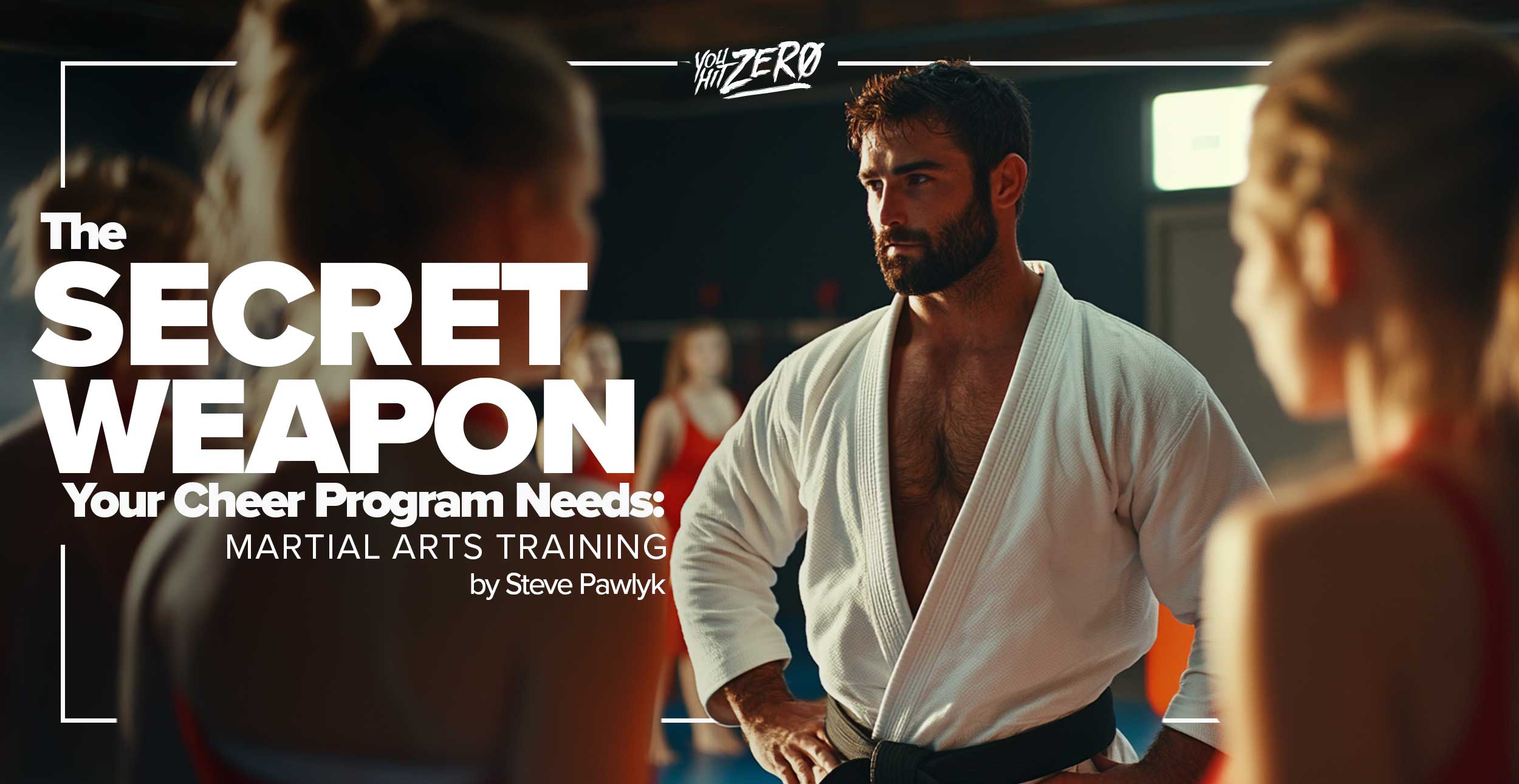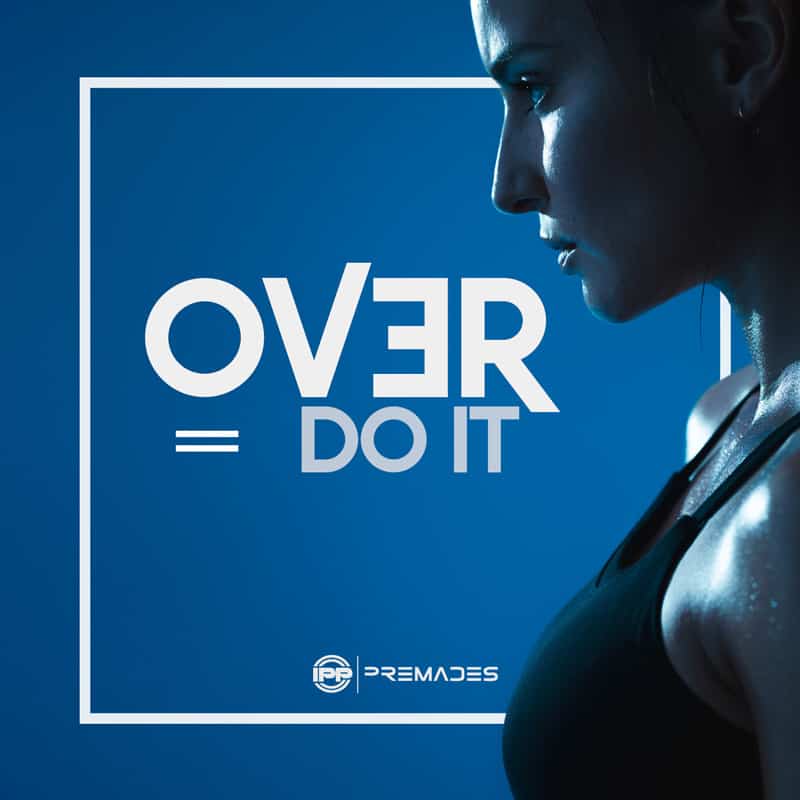By Steve Pawlyk
Published December 23, 2024
Competitive cheer is constantly evolving, and the most successful teams are those willing to embrace innovative approaches to training. While choreographers, tumbling coaches, and strength trainers are common resources for cheer teams, one often-overlooked addition is a martial arts instructor. Much like bringing in a choreographer for a couple days, hiring a martial arts expert for a 1–3 day training session could provide a unique edge by enhancing body control, precision, and explosiveness. Here’s why it could be a game-changer for your team.
Why Martial Arts?
Martial arts training emphasizes mental discipline, body control, balance, and explosive movements—all of which translate seamlessly into cheerleading. Whether it’s perfecting a tumbling pass, sticking a stunt, or improving jumps, martial arts can give athletes a deeper understanding of their bodies and how to move efficiently under pressure.
Key benefits include:
- Improved proprioception (awareness of body position).
- Enhanced flexibility and mobility for cleaner, higher jumps and kicks.
- Explosive power for tumbling and dynamic transitions.
- Increased focus and mental resilience, vital for high-pressure competitions.
Step-by-Step Plan for a Martial Arts-Centered Training Session
Day 1: Building the Foundation—Body Awareness and Basics
On the first day, the martial arts instructor would introduce basic concepts that improve proprioception and coordination. The goal is to familiarize athletes with movements and principles that will directly enhance their cheer skills.
Example Activities:
- Dynamic Warm-Ups with Martial Arts Movements
- High-Knee Kicks: Focus on height and control, engaging core and hip flexors.
- Lunging Arm Swings: Mimic martial arts strikes to warm up shoulders and improve range of motion.
- Balance Drills
- One-legged stances with slow, deliberate kicks to improve balance and stability.
- Progression: Add a partner for light resistance to simulate dynamic stunting scenarios.
- Introduction to Martial Arts Stances
- Teach low, stable stances (e.g., horse stance) to develop lower body strength and control.
Cheer Translation:
- Improved balance translates to steadier bases and more controlled landings in tumbling and stunting.
- Strengthened stances enhance pyramid stability and basket tosses.
Day 2: Explosive Power and Precision
With a foundation in place, the second day would focus on power and precise execution, both essential for cheerleading.
Example Activities:
- Kicking Drills for Explosiveness
- Front Kicks: Emphasis on speed and height.
- Side Kicks: Focus on core engagement and control.
- Athletes practice “snapping” kicks with maximum power and clean lines.
- Strike Training for Arm Motions
- Teach clean, sharp hand strikes (e.g., jabs or palm strikes) to mimic the precision of cheer arm motions.
- Use resistance bands for added difficulty, building strength and control.
- Plyometric Martial Arts Movements
- Jump-Knee Strikes: Engage explosive power similar to cheer jumps.
- Bounding Drills with Spins: Mimic twisting tumbling passes.
Cheer Translation:
- Kicking drills improve jump height and pointed toes, creating a more polished performance.
- Precision strikes enhance the sharpness and clarity of motions during routines.
- Plyometrics build the explosive power needed for tumbling and tosses.
Day 3: Dynamic Control Under Pressure
The final day focuses on combining balance, power, and precision with dynamic, high-pressure scenarios. The goal is to simulate the mental and physical demands of competition.
Example Activities:
- Partner Resistance Training
- Partners lightly push or pull while the athlete maintains a stance or executes a motion.
- Builds core strength and reaction time for stunting stability.
- Reaction Drills
- Martial arts-inspired sparring drills where athletes must respond quickly to visual or verbal cues.
- Example: Coach calls out a movement, and athletes perform it immediately.
- Dynamic Landing and Recovery Techniques
- Teach athletes how to roll out of a fall or recover balance after a misstep.
- Focus on soft landings to protect joints and minimize injury risks.
Cheer Translation:
- Partner drills improve stability under dynamic pressure, perfect for stunting scenarios.
- Reaction drills build mental focus and quick adjustments during routines.
- Landing techniques reduce injury risk and create more controlled, visually appealing landings.
How Martial Arts Training Enhances the Entire Team
- Stronger Jumps and Kicks: Athletes develop the explosive power and flexibility to execute higher, cleaner jumps.
- Sharper Motions: Precision drills translate into sharper, more polished arm motions and choreography.
- Safer Landings: Proper landing mechanics reduce the risk of injuries, ensuring athletes stay competition-ready.
- Greater Stability in Stunts: Improved balance and core strength lead to steadier bases and more confident flyers.
- Mental Resilience: The discipline and focus cultivated through martial arts create athletes who thrive under pressure.
Implementing This in Your Gym
- Hire a Qualified Martial Arts Instructor: Look for someone with experience in disciplines emphasizing body control, such as taekwondo, karate, or capoeira.
- Tailor the Curriculum: Collaborate with the instructor to design a program that aligns with your team’s goals.
- Incorporate Regularly: After the initial session, integrate martial arts-inspired drills into your weekly practices to maintain the benefits.
Martial arts training offers cheer teams a secret weapon by addressing critical aspects of performance often overlooked in traditional cheer practice. By hiring a martial arts instructor for a short but impactful training session, you can equip your athletes with the tools they need to excel in balance, power, and precision—all while reducing injury risk. This innovative approach could be the game-changer that takes your team’s performance to the next level.
IPP's Premade Mixes are USA Cheer Compliant and customizable! Add Sound FX, swap songs, & more! Add your Team Name to the mix for only $10!










